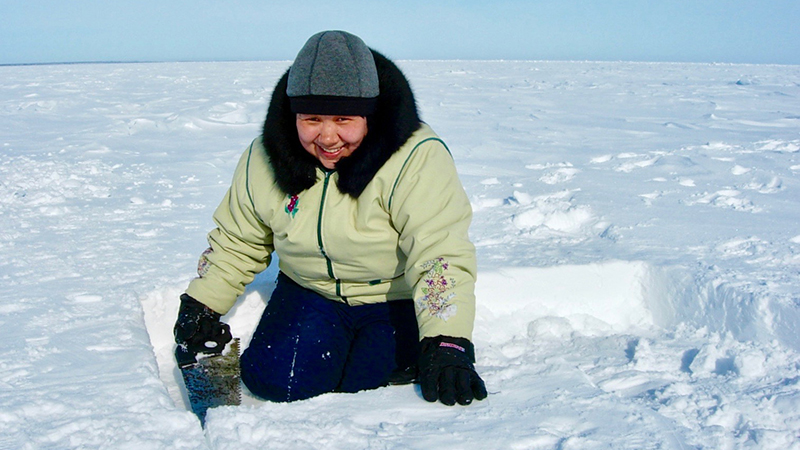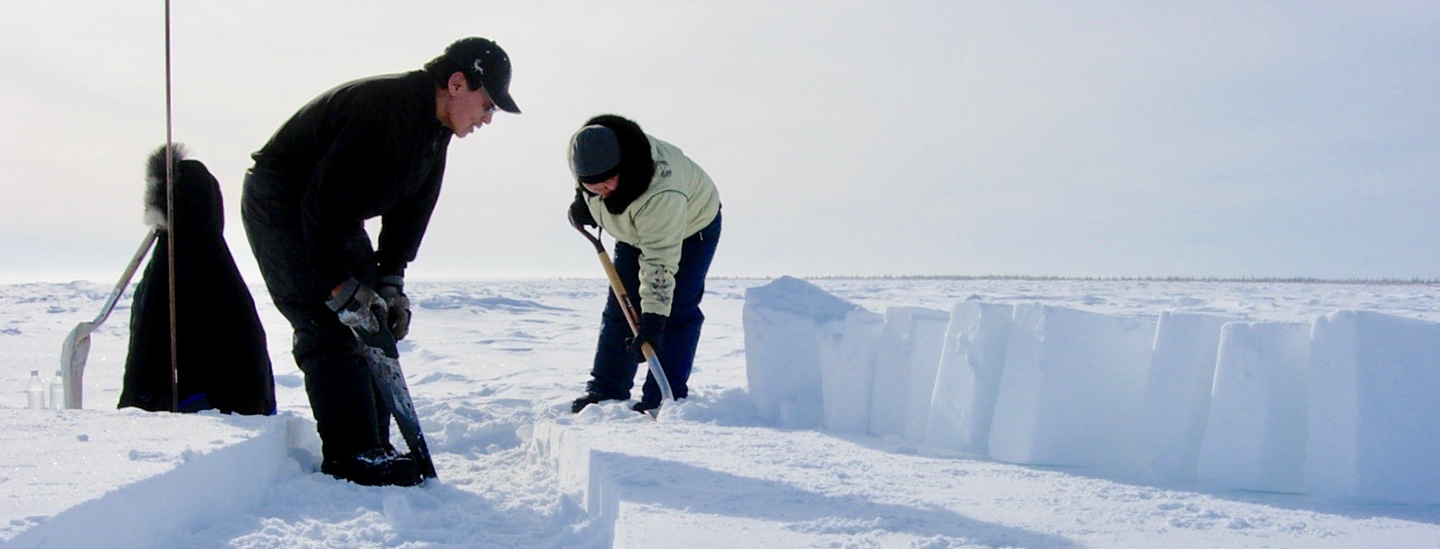
“Not too soft, not too hard,” is how Joseph gently describes what he’s looking for as he pokes a slender copper pole into the frozen southern shores of Hudson Bay—a two-hour dogsled trek from the Manitoba town of Churchill (three bars, five restaurants, five motels and a friendly post office that will stamp your passport with an inky polar bear). “You have to be able to saw the snow and it still must hold together as a solid block,” he explains.
We’re trudging through deep snow and frozen aqua-coloured tide pools (along with Joseph’s wife, Mary, and puppy, Melot) in the Canadian transitional zone between tundra and boreal forest, where the view is nothing but vast expanses of blue and white (sky and snow), translating into a stark, icy beauty that almost brings a frozen tear to the eye.
Joseph and Mary (the Inuit favour biblical names) are guest instructors this week at the cozy Dymond Lake Ecolodge. This is our home base for great hospitality—fresh-baked cinnamon rolls, almond-crusted Arctic char, red wine and caribou soup, plus snowshoeing and snowmobiling outings. I’ve managed to spot moose, Arctic hare and the snow-white, furry-footed ptarmigan—a kind of grouse. We happen upon some hunters who have just had their way with a bunch of ptarmigan near the lake and are going to “pluck ’em and fry ’em up in a pan.”
Another day we catch a glimpse of the Hudson Bay Quest—a 400-kilometre dogsled race that takes place in the barren tundra between Arviat, Nunavut and Churchill, Manitoba, each year, in which both city dwellers and traditional Inuit racers submit to a punishing three-day race. We meet a 75-year-old dressed head to toe in caribou skins resting with his dog team—a picture right out of National Geographic. Unfortunately, my camera is frozen. The eventual winner is a 20-something from Saskatchewan.
Churchill is known as the “polar bear capital of the world,” owing to the high concentration of big furry beasts there and the fact that spotting a polar bear is an almost daily occurrence. But today there are none to be seen—even though every cabin is polar-bear proofed and every local has dozens of close-encounter stories. Gypsy’s bakery (now closed, unfortunately) had to replace the front windows after a bear crashed through one evening with a hankering for some blueberry pie.
It’s almost springtime, so for now the bears are out on the farthest reaches of the ice, hunting seals.
No matter, I’ve got other things on my mind: It’s –40° C, for one, and I am wearing seven layers of clothing, including three jackets and four pairs of pants (a personal best). And for another, I’m about to make my very first igloo.



